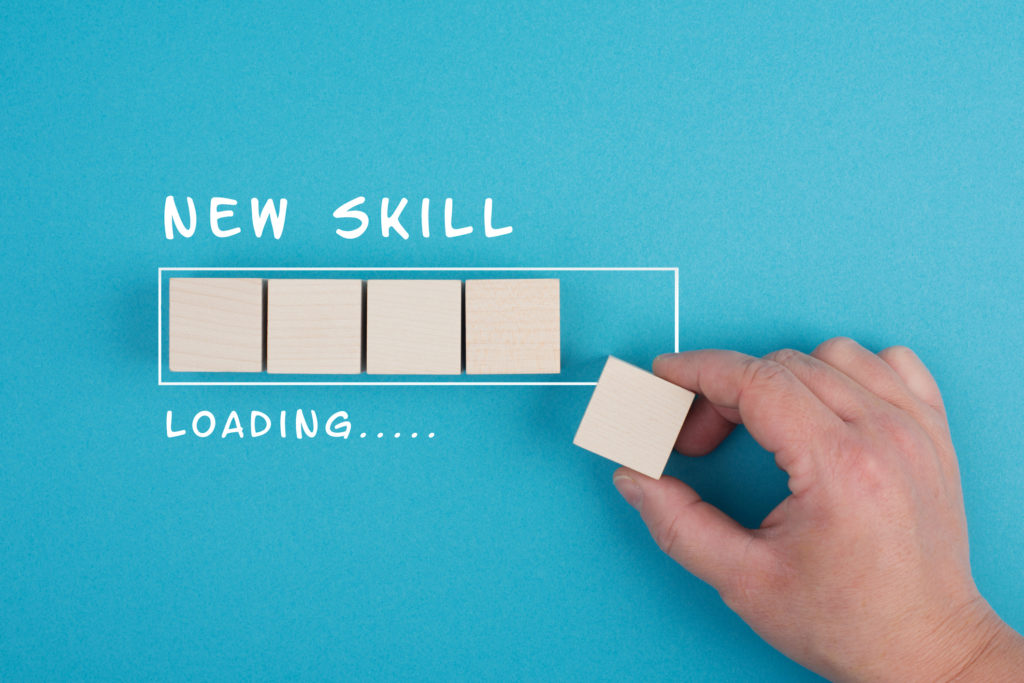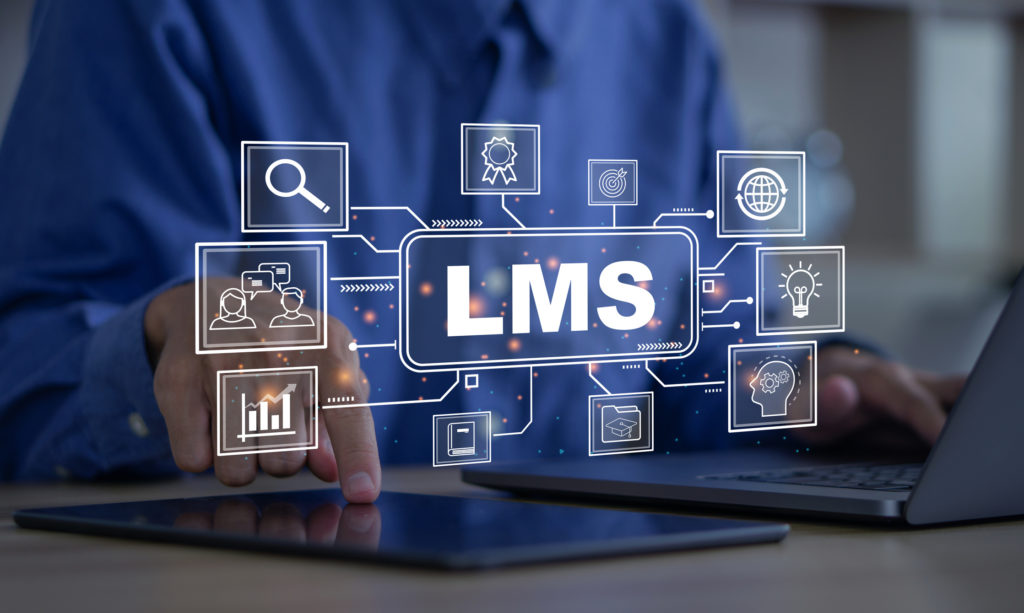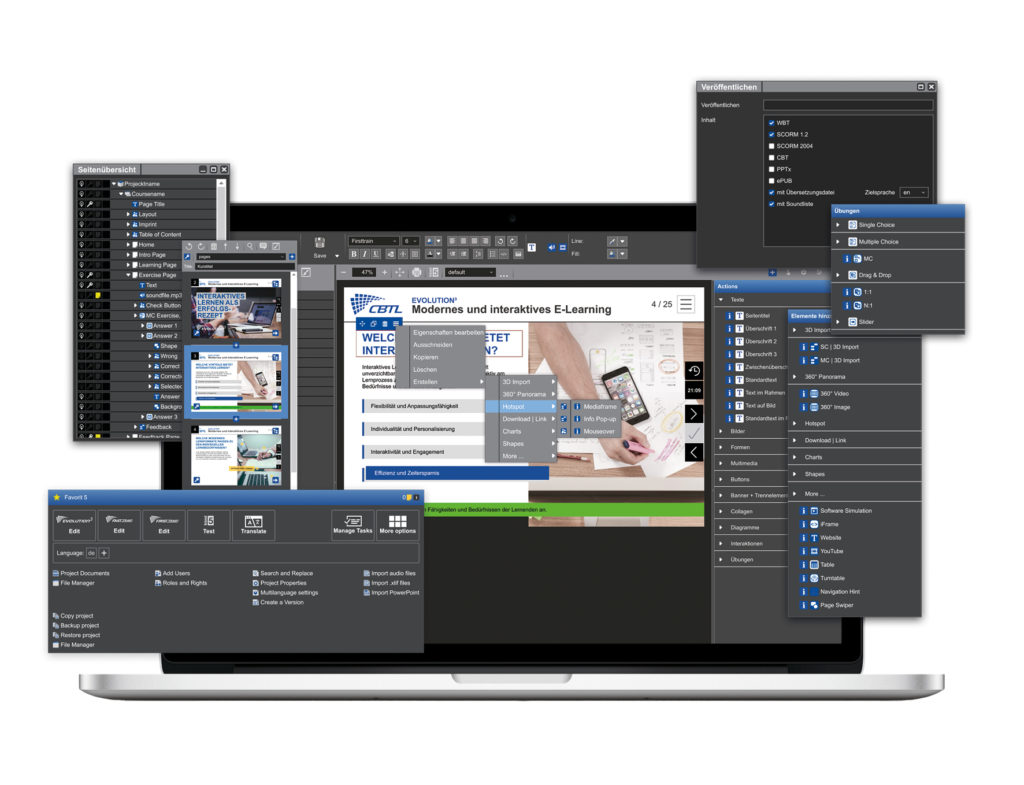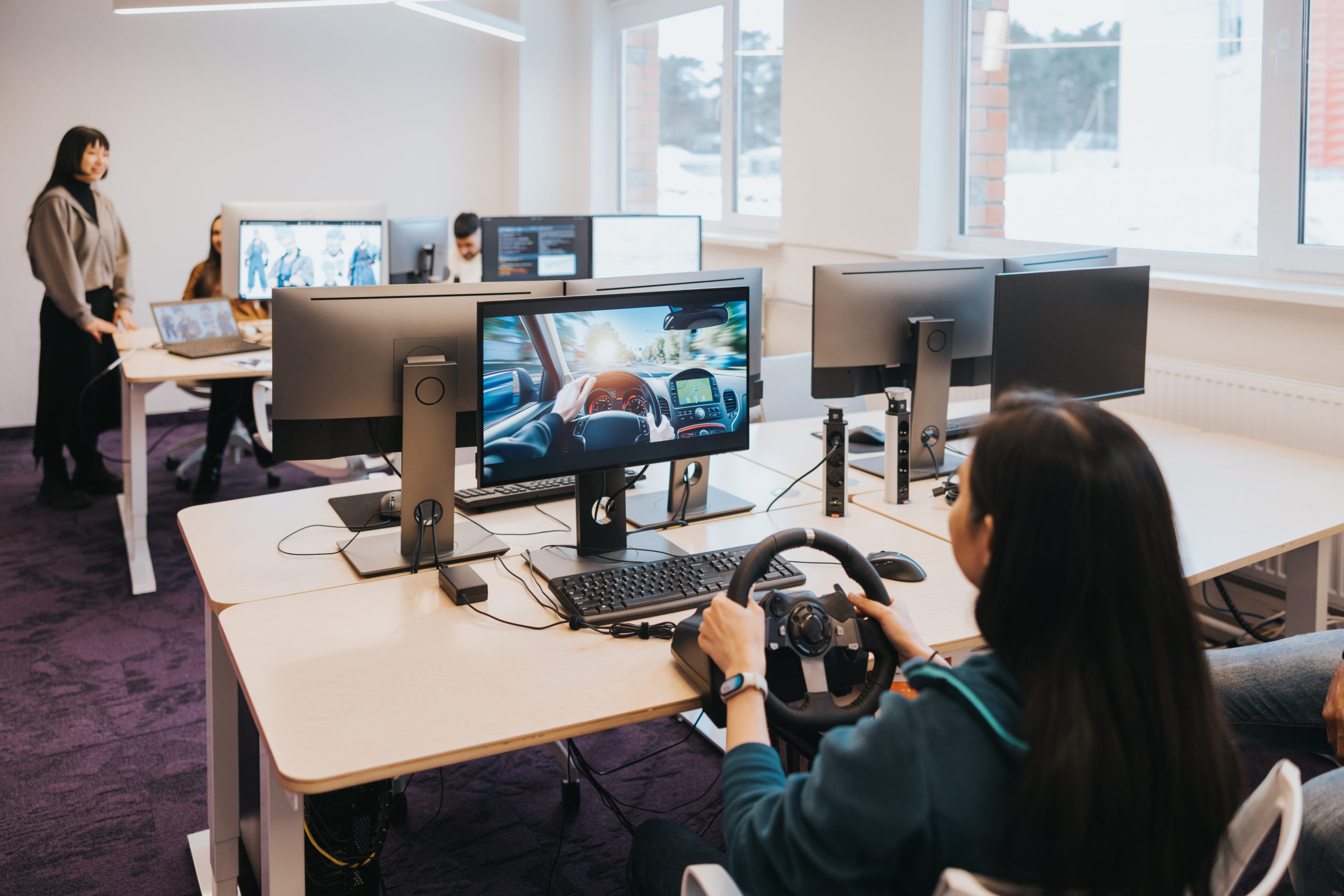Gamification vs. Serious Games
Gamification and serious games have become an integral part of modern e-learning concepts. Learners are significantly more motivated when playful elements or entire digital games are used to impart knowledge. For companies and educational institutions, these approaches represent an innovative way of increasing both the motivation to learn and the efficiency of educational programmes.
It’s not just about making learning processes fun. Rather, it is about a well thought-out didactic embedding that is based on scientific findings. It must establish the benefits and context of the “real world” in order to create good learning experiences, and the elements do not have an entertaining function. Gamification and serious games have been shown to have a positive impact on learner motivation and performance.
Charlier et al. (2016); Girard et al. (2012); Jaramillo-Mediavilla et al. (2024), Ritzhaupt et al. (2021); Sailer & Homner (2020); Wouters & Spek (2013); Zhang & Yu (2022)
A key factor for the success of gamification in e-learning are affective, cognitive and behavioural effects:
Affective/motivational effects
Through playful elements, the emotional connection to the learning process is strengthened, which increases the motivation and commitment of the learners.
Cognitive effects
Gamification can improve understanding and memorisation by deepening and illustrating learning content through interactive mechanisms.
Behavioural effects
Through reward systems and feedback, the behaviour of learners is specifically influenced so that they engage longer and more intensively with the learning content.
This section looks at the similarities and differences between gamification and serious games and shows how they can be used in e-learning.

What is gamification in e-learning?
Gamification is the targeted use of typical game elements in a non-game context, e.g. in learning platforms or digital training courses. Points, awards (badges) and leaderboards are examples of such mechanisms that are intended to motivate learners and encourage more engagement. In the e-learning context, the aim is to increase the willingness to learn through playful incentives and targeted feedback mechanisms without changing the core content.
From a didactic perspective, gamification is particularly interesting because direct feedback and rewards can encourage curiosity and intrinsic motivation. Numerous studies show that learners interact more frequently through playful elements, spend longer with the learning material and engage more intensively with the content. Experience has shown that this increase in learning motivation also has an effect on learning efficiency and supports the long-term retention of knowledge.
How can serious games be used in practice?
Serious games go one step further than gamification. While gamification enriches existing learning content with playful elements, serious games are independent games whose primary aim is to convey learning content in a playful way. They are often characterised by a continuous story, complex challenges and interactive scenarios in which learners can directly experience the consequences of their actions.
Serious games are used in practice. This happens, for example, in simulations. These include software, process or negotiation simulations as well as other special simulations. With the help of an authoring tool, interactive business games can also be created as serious games. These realistically depict economic relationships. Their advantage lies in the combination of playful flow and realistic application. Learners can make decisions and try out strategies without any real risk and receive immediate feedback on their actions. This form of experience-based learning is particularly effective because it involves very intensive cognitive engagement with the content.
What opportunities and possibilities do these approaches offer?
Gamification and serious games offer a wide range of opportunities to make learning processes more attractive and sustainable. Targeted motivational elements increase learners’ attention so that they are more willing to engage with complex content. This can accelerate the learning curve and improve understanding of challenging topics. In addition, playful approaches often promote self-reflection, as mistakes can be made consciously and corrected directly.
Another advantage is that both approaches can be easily personalised. Gamified learning platforms, for example, allow difficulty levels to be customised so that learners are challenged differently depending on their level of knowledge. With serious games, the scenario can be customised to the specific needs of an industry or target group. This creates a high level of relevance for learners, which in turn leads to greater intrinsic motivation.

Which elements are particularly effective for learning?
Feedback mechanisms, progress indicators and story-based elements have proven effective in the design of gamified learning environments and serious games. Real-time feedback provides learners with immediate information about their level of performance. Points, levels or badges serve as a visible progress indicator and increase ambition and the expectation of self-efficacy. Narrative elements in particular create an immersive learning experience, as they embed learning in a story and thus increase the emotional connection to the learning content.
The aspect of social interaction is just as important. Group tasks, team competitions or solving quests together promote a sense of community and encourage interaction. This collaborative nature not only increases learning success, but also promotes soft skills such as communication, cooperation and problem solving.
Points and levels
Badges
Leaderboards
Performance charts / progress indicators
Avatars
Teammates (competition / cooperation)
Storytelling
| Gamification-Elemente | Learning psychological mechanisms | Effectiveness (motivation, cognition, behaviour) | Literatur |
|---|---|---|---|
| Points and levels | (Cumulative) feedback, reward | Huang & Hew (2015); Abenes et al. (2023) | |
| Badges | Cumulative feedback, reward | Sailer et al. (2016); Mazarakis & Bräuer (2023); Huang & Hew (2015); Abenes et al. (2023) | |
| Leaderboards | Cumulative feedback, reward, social comparison | Sailer et al. (2016); Huang & Hew (2015); Landers et al. (2017); Abenes et al. (2023) | |
| Performance charts/ progress indicators | Continuous feedback, individual comparison, self-monitoring | Sailer et al. (2016); Mazarakis & Bräuer (2023); Abenes et al. (2023) | |
| Avatars | Decisions, adaptability, personalisation | Sailer et al. (2016); Abenes et al. (2023) | |
| Storytelling | Immersion, relevant objective | Sailer et al. (2016); Mazarakis & Bräuer (2023); Sailer & Homner (2020) | |
| Teammates (competition/collaboration) | Meaningful roles | Sailer et al. (2016); Abenes et al. (2023); Sailer & Homner (2020) |
Conveying complex knowledge in a playful way
Motivate your employees with interactive learning modules. Gamification elements such as points, levels or quiz formats increase attention and willingness to learn. With EVOLUTION³, you can create knowledge transfer that sticks in the mind.
Digital learning ecosystems

With the establishment of digital learning ecosystems, the question of the appropriate infrastructure for gamification and serious games is also becoming increasingly important. Learning management systems (LMS) and learning experience platforms (LXP) play a central role in the distribution, management and success monitoring of learning content. However, they are usually dependent on external solutions for the technical implementation of game-based learning formats. The design and development of interactive elements such as levels, simulations, decision trees or reward mechanisms primarily takes place in specialised authoring tools. To ensure that these can be integrated smoothly, open interfaces and close integration into the existing learning architecture are required. This is the only way to embed gamification elements into the learning process in a way that makes sense not only visually but also functionally.
The strategic importance of authoring tools is often underestimated. They are not only tools for content creation, but also the central lever for didactic quality, target group orientation and creative diversity. While LMS and LXP serve as a stable infrastructure for organisation and reporting, authoring tools enable the flexible and modular development of gamified learning content tailored to different skills, role profiles and learning objectives. In a future-proof digital learning ecosystem, it is therefore not only the platform that is crucial, but also the interaction of an intelligent set of tools. Anyone who wants to use gamification effectively should see authoring tools as a strategic core component and not as a technical add-on.

What approaches are there for the technical implementation of gamification?
The technical implementation of gamification concepts in e-learning solutions initially focuses on the integration of points systems, badges and rankings. These can be integrated into existing learning management systems (LMS) via special plugins or APIs. Modern learning platforms often already offer integrated functions that enable various game mechanics such as progress bars or the awarding of honours when certain learning objectives are achieved.
There are also advanced solutions that use artificial intelligence (AI) and learning analytics to analyse user behaviour and generate personalised gamification elements. For example, automated learning paths can be created based on individual learning progress. In this way, the learning environment is customised to the needs and performance level of the learners and a dynamic, motivating ecosystem is created.
How can this be implemented in the authoring tool based on the learning content?
Authoring tools enable the creation of interactive learning content that can be enriched with game mechanics. For example, quizzes, scenario-based tasks or mini-games can be developed with the help of drag-and-drop editors. The integration of gamification elements such as time limits, reward points or playful feedback increases motivation. A clear instructional design also ensures that the didactic objectives are not overshadowed by excessive fun.
The use of storytelling approaches in authoring tools is particularly effective. Here, a common thread is drawn through the learning module that immerses the participants in a story and thus emotionally anchors the relevance of the learning content. Integrated scenario editors make it possible to depict realistic situations in which learners make their own decisions. This not only trains technical skills, but also promotes critical thinking and problem-solving skills.
Turn your learning content into a competitive advantage
With gamification, you create engagement that pays off. Encourage initiative, measurable learning objectives and sustainable skills development. EVOLUTION³ provides you with the tools to do this – intuitively, flexibly and efficiently.
Conclusion
Gamification and serious games have the potential to raise e-learning programmes to a new level of motivation and quality. They combine playful elements with serious, didactically sound content and thus create a learning experience that appeals both cognitively and emotionally. Modern learning ecosystems, supported by LMS/LXP and authoring tools, enable the customisation and effective implementation of these concepts. Especially in an increasingly digital world of work and learning, the social aspect must not be neglected – interactive, collaborative forms of learning increase the transfer of knowledge and strengthen the sustainable anchoring of new skills.

